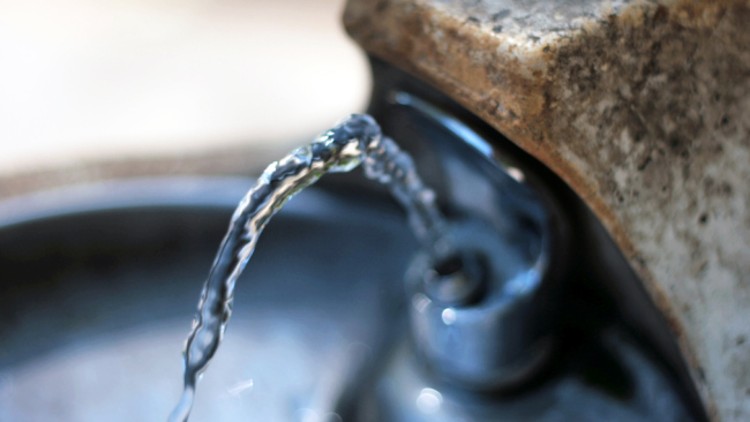Is there lead in my drinking water? Lead will be stored in your body and harmful to your health. The following measures will probably be effective in reducing lead levels because most of the lead in household water usually comes from the plumbing supply in your house, not from the local water supply. Let’s take a look at information about lead in drinking water and how to reduce it.
How Lead Gets into Drinking Water?
Where does lead come from? One major source of lead in drinking water comes from old rusty water pipes and eroded natural deposits. Lead also enters water from solder, faucets, and fittings. All from which significant amounts of lead leach into the water – especially hot water. The amount of lead in drinking water depends on:
- the acidity and alkalinity of the water
- the types and amounts of minerals in the water
- the temperature of the water
- how long the water stays in pipes
- the presence of protective scales or coatings inside the plumbing materials
Effects of Lead Poisoning
According to the Environmental Protection Agency, lead poisoning can cause adverse health issues in small doses, accumulating in the body over time. Children and pregnant women are especially at risk.
Children
Even low levels of lead in children can result in:
- Behavioral and learning problems
- Lower IQ and hyperactivity
- Slow growth
- Hearing problems
- Anemia
In rare cases, ingestion of lead can cause seizures, coma and even death.
Pregnant Women
Lead can accumulate in our bodies over time, where it is stored in bones along with calcium. During pregnancy, lead is released from bones as maternal calcium and is used to help form the bones of the fetus. Then lead also crosses the placental barrier exposing the fetus to the lead. This results in serious effects to the mother and her expecting baby, including:
- Reduced growth of the fetus
- Premature birth
Adults
Adults exposed to lead can suffer from:
- Cardiovascular effects, increased blood pressure and incidence of hypertension
- Decreased kidney function
- Reproductive problems (in both men and women)
How to Reduce Lead in Drinking Water
- Flush your pipes before drinking – The more time water has been sitting in your home’s pipes, the more lead it may contain. Run water for at least 30 seconds or until water is cold to the touch or reaches a steady temperature before using it for drinking for cooking if it hasn’t been used for several hours. This flushes lead-containing water from your fixture.
- Only use cold tap water for cooking, drinking or making a baby’s formula – Do not cook with or drink water from the hot water tap because lead dissolves more easily into hot water, especially for making baby formula. Run cold water until it becomes as cold as it can get.
- Do not boil water to remove lead – Boiling water will not get rid of lead contamination. And be careful of the places you may find lead in or near your home. Paint, soil, dust and some pottery may contain lead.
- Replace your plumbing fixtures if they are found to contain lead – Plumbing materials, including pipes, brass faucets, fittings and valves may contribute lead to your drinking water. Check your plumbing fixtures to see if they are lead-free, and read the labels closely.
- Regularly change or clean your faucet’s aerator – Remove loose lead solder and debris. Every few months remove the aerator from each faucet in your home and flush the pipes for 3-5 minutes.
- Use a refrigerator water filter certified to remove lead – If your home is served by a lead service line, and if lead-containing plumbing materials are found to be in your home, you should consider purchasing a fridge water filter from Clatterans, where provides high-quality refrigerator filters compatible to various fridge models and tested to IAPMO and NSF/ANSI standards 42.
- Contact your water system – Learn more about sources of lead and services lines for removing lead through your water system.






… [Trackback]
[…] Here you will find 83310 additional Information on that Topic: blog.clatterans.com/health/how-to-reduce-lead-in-your-drinking-water-at-home/ […]
… [Trackback]
[…] Read More on to that Topic: blog.clatterans.com/health/how-to-reduce-lead-in-your-drinking-water-at-home/ […]
… [Trackback]
[…] Info on that Topic: blog.clatterans.com/health/how-to-reduce-lead-in-your-drinking-water-at-home/ […]
… [Trackback]
[…] Here you can find 67402 more Info on that Topic: blog.clatterans.com/health/how-to-reduce-lead-in-your-drinking-water-at-home/ […]
How to Reduce Lead in your Drinking Water at Home Clatterans Blog How to Reduce Lead in your Drinking Water at Home
https://www.ranheimkorps.no/bilder-fra-jubileumskonserten/
How to Reduce Lead in your Drinking Water at Home Clatterans Blog How to Reduce Lead in your Drinking Water at Home
https://iwopusat.or.id/2018/02/28/diskusi-pp-iwo-media-di-antara-pusaran-pilkada-dan-hoax/
How to Reduce Lead in your Drinking Water at Home Clatterans Blog How to Reduce Lead in your Drinking Water at Home
http://mail.mirevallalkoztam.hu/hazipenztar-problemak-tul-magas-penztar-vagy-tagi-kolcson/
çeşme transfer
çeşme transfer
academic programmes
[…]usually posts some quite interesting stuff like this. If you are new to this site[…]
mut academic programmes
[…]usually posts some really fascinating stuff like this. If youre new to this site[…]
must academic programmes
[…]Every once in a even though we pick out blogs that we study. Listed below would be the newest web-sites that we choose […]
jooust academic programmes
[…]check below, are some absolutely unrelated web-sites to ours, nevertheless, they are most trustworthy sources that we use[…]
tuc academic programmes
[…]Wonderful story, reckoned we could combine a handful of unrelated information, nonetheless actually worth taking a search, whoa did a single learn about Mid East has got additional problerms too […]
porno izleme sitesi
porno izleme sitesi
izmir travesti
izmir travesti
How to Reduce Lead in your Drinking Water at Home Clatterans Blog How to Reduce Lead in your Drinking Water at Home
https://www.pegaso.press/2021/05/13/revierte-pemex-contratos-leoninos-y-actos-de-corrupcion/
yasam ayavefe
yasam ayavefe
How to Reduce Lead in your Drinking Water at Home Clatterans Blog How to Reduce Lead in your Drinking Water at Home
http://textier.ro/2007/04/sarmalele-reci-in-pachetel-de-primavara/comment-page-2/
How to Reduce Lead in your Drinking Water at Home Clatterans Blog How to Reduce Lead in your Drinking Water at Home
https://onegujarat.com/banaskantha-district/
How to Reduce Lead in your Drinking Water at Home Clatterans Blog How to Reduce Lead in your Drinking Water at Home
https://maliadawkins.com/project/commercial-headshots/attachment/0090/
How to Reduce Lead in your Drinking Water at Home Clatterans Blog How to Reduce Lead in your Drinking Water at Home
https://auburnsmidwest.com/part-number/g3516/
How to Reduce Lead in your Drinking Water at Home Clatterans Blog How to Reduce Lead in your Drinking Water at Home
https://word.wxrwcz.cn/2018/09/25/hello-world/